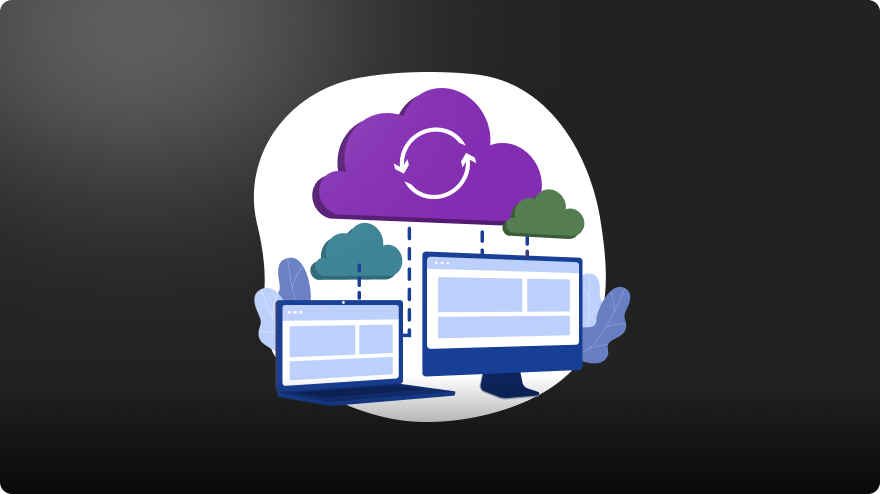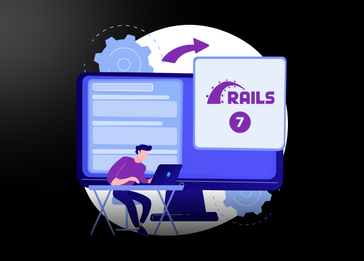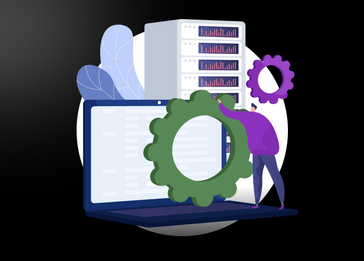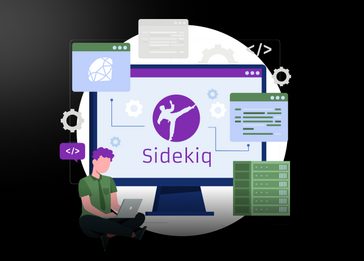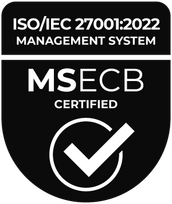Cloud migration is the process of moving applications, data, infrastructure, security and other assets to a cloud computing environment.
Enterprises often move data, applications, and IT workloads from on-premises servers to the public cloud, but cloud migration also involves moving data and applications in-house from one cloud provider to another. While its usefulness may be apparent, let’s break it down: who might need it, and what do they need it for?
How does the migration process work, and what do you need to know about it?
Over the last three years, P2H has been working on a donation platform for a client from the Middle East. Through the website and app of this project, a sum of over $51 million in donations has been successfully raised. As the platform is currently undergoing a redesign, we will back up our insights with real-time examples.
A cloud migration strategy is a comprehensive plan that describes the ground-up transformation of an organization’s digital assets (which may include services, databases, IT resources, and applications) from an on-premises or co-located infrastructure to a cloud environment.
This process may partially or fully involve moving from one cloud platform to another, commonly known as cloud-to-cloud migration.
Implementing a cloud migration strategy typically involves five major steps: preparation, planning, migration, operations, and optimization.
This complex process is not limited to moving data from on-premises data centers to a recognized public cloud provider such as AWS, Google Cloud or Microsoft Azure; it can also involve moving from one cloud service to another.
Enterprises venturing into the cloud for the first time need to consider several key factors. An effective cloud migration strategy can provide a clear roadmap, ensure a smooth transition, and maximize the operational efficiencies that the cloud provides.
Key benefits and challenges
Advantages
Scalability
Unlike physical servers, cloud systems are more flexible in expanding and adapting to heavy loads.
Reduced costs
From a support perspective, cloud solutions have lower operational costs and are easier to maintain.
Performance
Cloud solutions are easily scalable and are also a great solution for geographic expansion as they give businesses the ability to easily host anywhere.
New user experience
With cloud services, users can access data from anywhere, enabling more modern and flexible tools for development.
Challenges
Lack of strategy
Successful implementation of cloud solutions requires preparation and careful planning because the requirements for each data set are different.
Cost management
It is important to realize that although cloud solutions are cost-effective, this does not always hold. Businesses should pinpoint the key performance indicators of the solution.
Service Provider
Selecting a service provider is very important at any stage of cloud adoption. Changing providers can be costly and time-consuming if the initial provider does not meet the organization’s evolving requirements.
Data security
Cloud services use a shared responsibility model whereby they take responsibility for infrastructure security and the client is responsible for the security of data and workloads.
When considering both the advantages and disadvantages, cloud solutions aren’t a perfect solution but represent new opportunities that should be approached with awareness and strategic thinking.
5 cloud migration strategies
While there are certainly many different strategies, we will focus on five adaptive ones that will work in almost all cases, Sometimes one will be enough, but sometimes the best solution is to apply several strategies that will address all the obsolete parts of an old system or application.
- Refactoring – A large percentage of the digital product market has needed an update for a long time. We are talking about legacy, the products created ten or fifteen years ago and still working based on the original solution. Refactoring in such cases is the best solution. This should not be seen as a “punishment” for business. More often than not it is a rethinking of outdated elements and with it the birth of new business solutions. Refactoring allows companies to update their applications with useful and efficient cloud capabilities that can outperform the current environment.
- Rehosting is the most common approach to cloud migration. By simply moving their code base to the cloud, companies can continue to operate with minor configuration changes. If the existing application is incompatible or outdated, they can choose one of the following paths.
- Revising or Re-platforming – in some cases, there is no need to completely rewrite the application code. For such cases, either rewriting critical parts of the product or optimizing for the cloud environment is used, and after these processes, the migration to the vendor’s cloud environment takes place.
- Repurchasing or Replacing. Since refactoring can be viewed as an extreme measure that requires a lot of time and money, replacing can be a preferable alternative. Instead of a complete rewrite of the product, one can find a ready-made cloud SaaS solution. This option is not suitable for all types of products, specialized applications will still require refactoring.
- Revisiting and Retiring. Moving to cloud-based solutions can incentivize getting rid of outdated systems or software. It is more of a business strategy than a technical decision, but from time to time its worth checking the relevance of the software used, and updating it in favor of more modern technology.
Cloud migration process step-by-step
The process of migrating to the cloud is not easy and requires some preparation, decisions, and investment. If we break it down into its components, migration is not as bad as it seems at first glance.
Like any process, cloud migration can be broken down into several steps.
Pre-migration period.
- Define a business strategy. As we described above, sometimes migration is not so much a technical need as it is a business challenge for a product or company looking to grow. It is important to take a balanced approach to the decision and consider the interests of all parties affected by the migration process.
- Migration planning. Prioritize which applications, databases, or infrastructure need to be migrated.
Migration process.
- Prepare the company. Even if the business is outsourcing, it is worth informing its IT staff of the upcoming changes. The team needs to be aware of any changes so that they can take the necessary steps and reduce the business risks associated with the process.
- Cloud deployment (wave deployment) is a cloud migration method that uses automated tools to move workloads at scale. Phased deployment reduces IT and business risks and helps manage the migration process.
After migration
- Workload protection and management. Visibility is paramount to control and security management; Using unified controls to simplify management, companies can detect and respond to threats in hybrid environments
- Cloud management and cost optimization. Enterprises are moving to the cloud because of its greater flexibility and scalability. These features allow enterprises to control their costs at a granular level as they need to increase or decrease resources based on demand.
Is the business ready for cloud migration?
Cloud computing is finally freeing enterprise IT teams from the burden of managing infrastructure and availability.
Hosting an application in the cloud is often the most logical step for development.
And while the migration process is quite capacious, with professional help, it becomes a new stage in a company’s development. If you have any doubts, our team will be happy to help you get rid of them.
